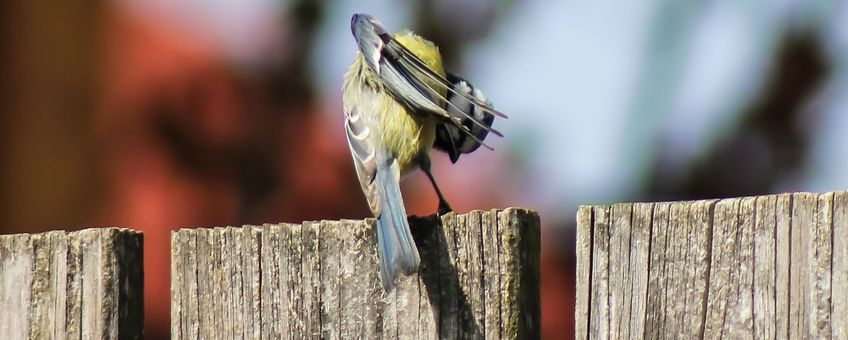
The preen gland of birds – of sexy chicks and healthy skin
Heidelberg UniversityThe preen gland (uropygial gland or oil gland) is the most prominent avian skin gland and exists in nearly all bird species. It is located at the back of the tale and can be recognized by its nipple-like appearance. The gland serves as a reservoir for preen gland secretion (uropygial gland secretion or preen oil), which is spread throughout the plumage during preening.
“In some birds, preening consumes more energy than feeding or diving”
Like scratching, bathing, dusting, sunning and shaking, preening is a common maintenance behavior in birds. It is highly cost-intensive and consumes between 5 to 30% of their daily time. In some birds, it consumes more energy than feeding or diving. Moreover, preening birds undergo reduced vigilance and are prone to predation. For this reason, preening, and most probably the preen gland as well, must have some hitherto unknown benefits that exceeds their costs. Otherwise, the laws of natural selection would rapidly have eliminated preening from the avian behavioral repertoire.
Antibiotic body lotion
 Bacteria in preen glands, to date, have rarely been reported. Of the more than 10,000 bird species, only a handful species are known to harbor bacteria in their preen glands. Accordingly, preen gland secretions had been deemed sterile for a long time.
Bacteria in preen glands, to date, have rarely been reported. Of the more than 10,000 bird species, only a handful species are known to harbor bacteria in their preen glands. Accordingly, preen gland secretions had been deemed sterile for a long time.
A widespread hypothesis often encountered in the literature proposes that preen oils act as an antibiotic body lotion to kill bacteria and fungi such as feather-degrading microorganisms (FDM). Notably, first evidence suggests that birds make use of the strongest weapon of FDM, keratinase, to beat them at their own game.
Interestingly, antimicrobial potential of preen oils has been detected for some bird species whose preen glands are colonized by bacteria. In these cases, symbiotic bacteria of the genus Enterococcus produce antimicrobial metabolites that are able to inhibit microbial growth.
On the other hand, the three species of bacteria from the preen glands of great spotted woodpeckers (Dendrocopos major) and turkeys (Meleagris gallopavo) are likely to play a different role. In first tests, they did not confer antimicrobial properties to their hosts’ preen waxes. Since they are not closely related to enterococci, an explanation different from symbiosis in terms of antimicrobial activity should be considered.
A sexy scent
For instance, they could be important in occupying a niche which would have otherwise been colonized by detrimental bacteria instead. Case in point for such relationships are the bacteria on human skin. Besides, the colonization of the gut in newborn children with lactic acid bacteria with the first sip of breast milk should not go unnoticed. Preen gland bacteria are also likely to be transferred from the parents to their chicks.
Moreover, bacteria often produce a characteristic smell. Odors can even be that strong that they repel predators, especially when secretions are squirted. Alternatively, or in addition, olfactory communication with conspecifics might occur. For example, the specific odors originating from uropygial microbiomes might help birds to recognize their kin. They could even be used as a fragrance or olfactory make-up to enhance birds’ sex appeal. Similar hypotheses also exist for humans.
Two studies on this topic have recently been published (2016, 2017) in the scientific journal Systematic and Applied Microbiology.
Text: Markus Santhosh Braun & Michael Wink, Institute of Pharmacy and Molecular Biotechnology, Heidelberg University
Photos: Pixabay; Markus Santhosh Braun
